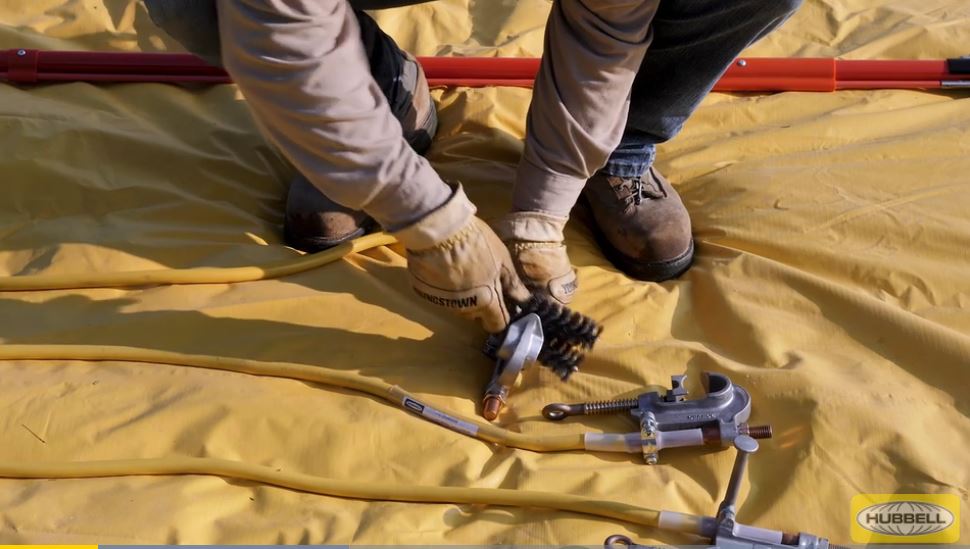Temporary protective ground sets are one of the most important pieces of personal protective equipment line workers use while performing de-energized and grounded line maintenance. To maintain the integrity of the ground sets while in service, Hubbell Power Systems recommends testing ground sets to ASTM F2249 at least once annually and performing a visual inspection before each use.
Testing
Personal protective ground sets can be tested using the CHANCE portable ground set tester. To test a ground set, a set is installed using the supplied ball stud adapters or adapters for underground bushings, elbows, or bus bar clamps. Once this is done, the test can be performed. The tester will provide a DC milliΩ resistance value which can be compared to the values found in ASTM F2249. These milliΩ values are also provided in the CHANCE portable ground set tester instructions as a table. If the resistance value is over the maximum allowed, then the ground set will need to be taken out of service, repaired, and retested before returned to service. The ground set tester also includes a set of probes and a probe setting so the exact location of the high resistance can be located.
Common failure points for temporary grounds include:
- Oxidation and contamination on the clamps
- Bad ferrule to cable connections
- Broken strands within the cable
- Broken stands at the cable to ferrule interface
When performing testing, the CHANCE ground set tester uses DC current. With DC current, there is no need to ensure that the cable is configured in a specific manner due to interference from outside sources such as rebar in concrete and other sections of the grounding cable.
Visual inspection
Before each use, Personal Protective Ground Sets should be visually inspected.
- Inspect the clamp bodies for cracks or physical damage.
- Make sure to rotate the ground clamp’s eye-screw fully in and out to ensure it moves freely during operation.
- Inspect the grounding cable for broken strands or cuts, especially near the connection with the ferrules. Broken strands or cuts in the cable can lead to higher resistance or can cause the cable to fail during a fault.
- Check ASTM F2249 Section 5 for a list of items to look at during visual inspection.
- It is a good practice to clean the jaws before installation to remove any oxidation with a wire cleaning brush. The goal for the ground sets is to have the resistance as low as possible and oxidation can cause a higher resistance in the path to ground.
When not in use, ground sets should be stored in a bag, away from sources of contamination. The cable should be coiled in such a way as to not overstress it.
Summary
In summary, routine testing and visual inspection of grounds sets will help to ensure that the ground sets provide adequate protection in the event of a fault. Please make sure to always follow your company’s work practices and procedures. If you would like more information regarding Lineman Tools Training for your team please contact us. For additional questions regarding any CHANCE tools, please reach out to your local Hubbell Utility Solutions Territory Manager.

